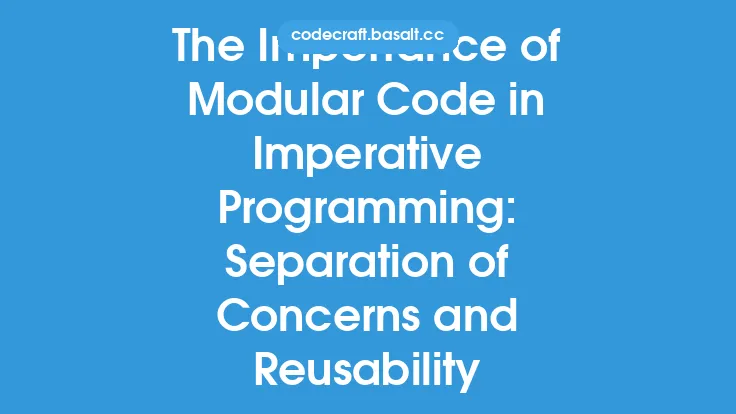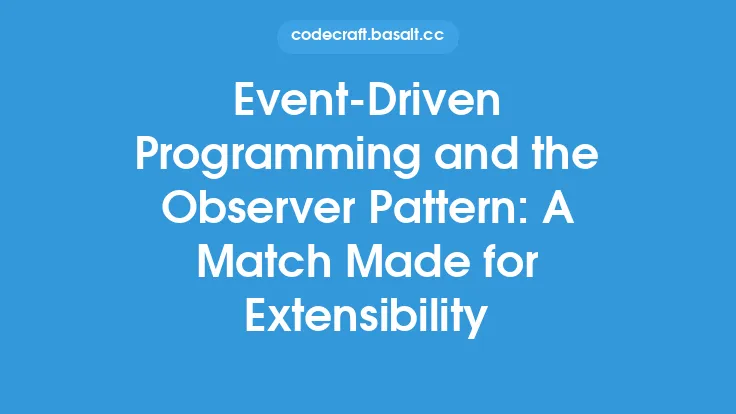In software development, modular programming is an approach that emphasizes the creation of independent, interchangeable modules that can be easily combined to form a complete system. At the heart of this approach lies the concept of interfaces, which play a crucial role in defining contracts for loose coupling between modules. Interfaces serve as a bridge between different modules, allowing them to communicate with each other without being tightly coupled. In this article, we will delve into the world of interfaces in modular programming, exploring their significance, types, and best practices for implementation.
Introduction to Interfaces
An interface is a abstract contract that specifies a set of methods, properties, and events that must be implemented by any class that implements it. Interfaces are used to define a common set of methods that can be called by other modules, without exposing the internal implementation details of the module. This allows modules to be developed independently, without being tightly coupled to each other. Interfaces are typically defined using a programming language's interface keyword, and they can be implemented by multiple classes.
Types of Interfaces
There are several types of interfaces that can be used in modular programming, each with its own strengths and weaknesses. Some of the most common types of interfaces include:
- Functional Interfaces: These interfaces define a single method that must be implemented by any class that implements the interface. Functional interfaces are often used in functional programming, where they are used to define small, reusable functions.
- Data Interfaces: These interfaces define a set of properties and methods that must be implemented by any class that implements the interface. Data interfaces are often used to define data structures, such as collections or databases.
- Event Interfaces: These interfaces define a set of events that must be implemented by any class that implements the interface. Event interfaces are often used in event-driven programming, where they are used to define events that can be triggered by user interactions or other system events.
Benefits of Interfaces
Interfaces provide several benefits in modular programming, including:
- Loose Coupling: Interfaces allow modules to be loosely coupled, meaning that they can be developed independently without being tightly coupled to each other.
- High Cohesion: Interfaces help to promote high cohesion within modules, by defining a clear and consistent set of methods and properties that must be implemented.
- Reusability: Interfaces make it easy to reuse code, by providing a standard set of methods and properties that can be implemented by multiple classes.
- Testability: Interfaces make it easy to test code, by providing a clear and consistent set of methods and properties that can be tested.
Best Practices for Implementing Interfaces
To get the most out of interfaces in modular programming, it's essential to follow best practices for implementation. Some of the most important best practices include:
- Keep Interfaces Simple: Interfaces should be simple and easy to understand, with a minimal set of methods and properties.
- Use Interfaces to Define Contracts: Interfaces should be used to define contracts between modules, rather than to expose internal implementation details.
- Avoid Over-Engineering: Interfaces should be designed to meet the needs of the current system, rather than to anticipate future requirements.
- Use Interfaces to Promote Loose Coupling: Interfaces should be used to promote loose coupling between modules, rather than to create tight coupling.
Implementing Interfaces in Modular Programming
To implement interfaces in modular programming, developers can follow a few simple steps. First, identify the modules that need to communicate with each other, and define an interface that specifies the methods and properties that must be implemented. Next, implement the interface in each module, using a programming language's interface keyword. Finally, use the interface to communicate between modules, rather than relying on tight coupling or internal implementation details.
Common Pitfalls and Challenges
While interfaces are a powerful tool in modular programming, there are several common pitfalls and challenges that developers should be aware of. Some of the most common pitfalls include:
- Over-Engineering: Interfaces can be over-engineered, making them complex and difficult to understand.
- Tight Coupling: Interfaces can be used to create tight coupling between modules, rather than promoting loose coupling.
- Interface Pollution: Interfaces can become polluted with unnecessary methods and properties, making them difficult to understand and maintain.
Conclusion
In conclusion, interfaces play a crucial role in modular programming, by defining contracts for loose coupling between modules. By using interfaces to define a common set of methods and properties, developers can promote loose coupling, high cohesion, and reusability, while also making it easier to test and maintain code. By following best practices for implementation, and avoiding common pitfalls and challenges, developers can get the most out of interfaces in modular programming, and create systems that are flexible, scalable, and easy to maintain.





